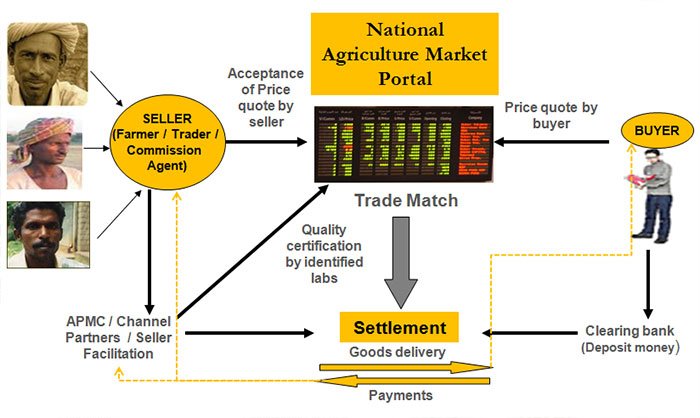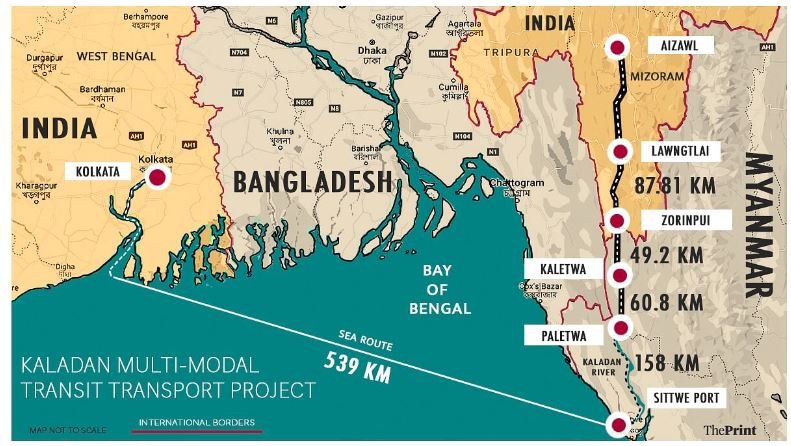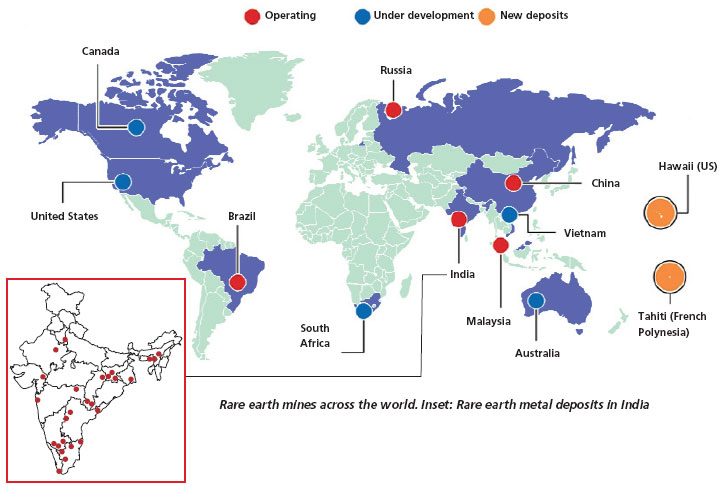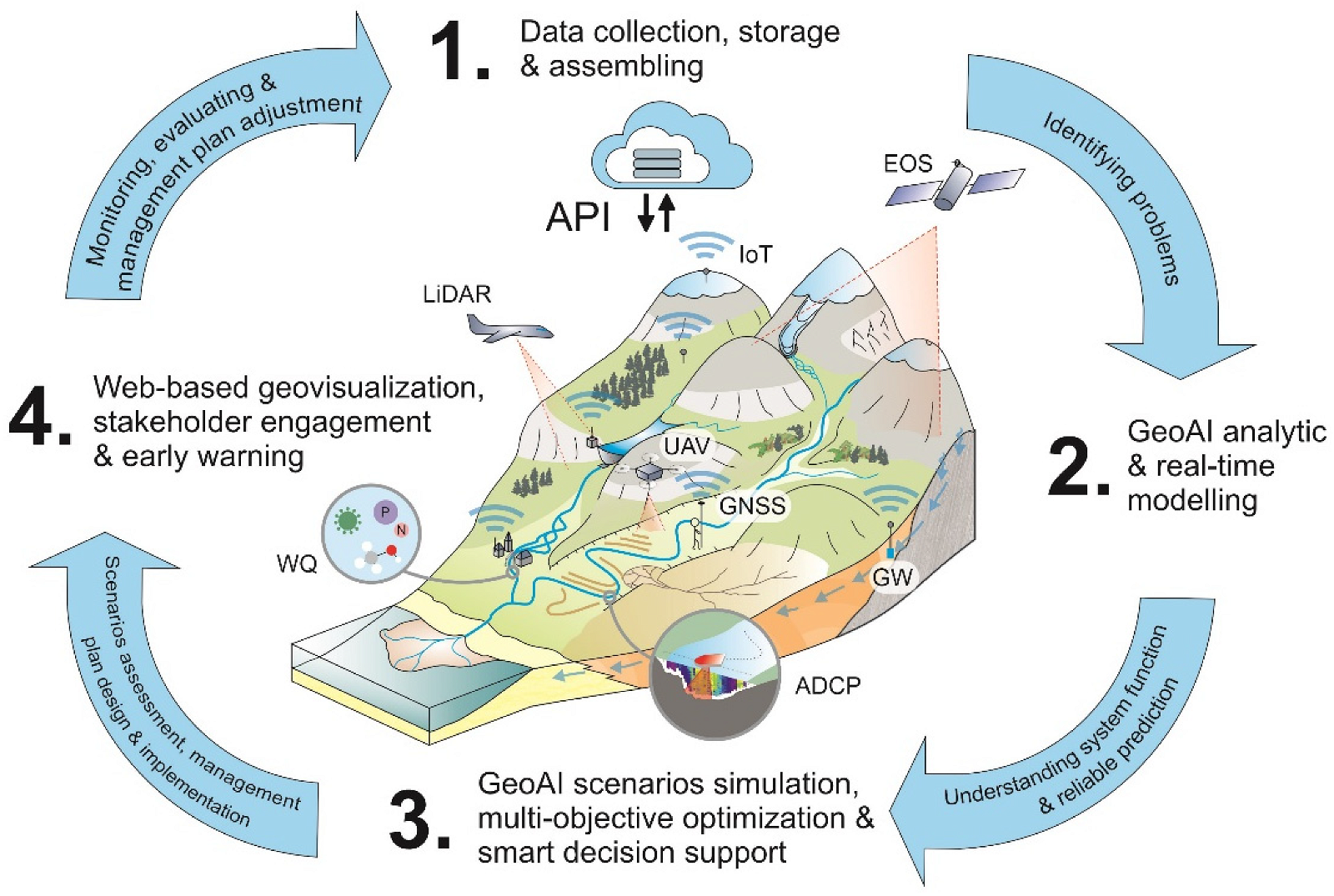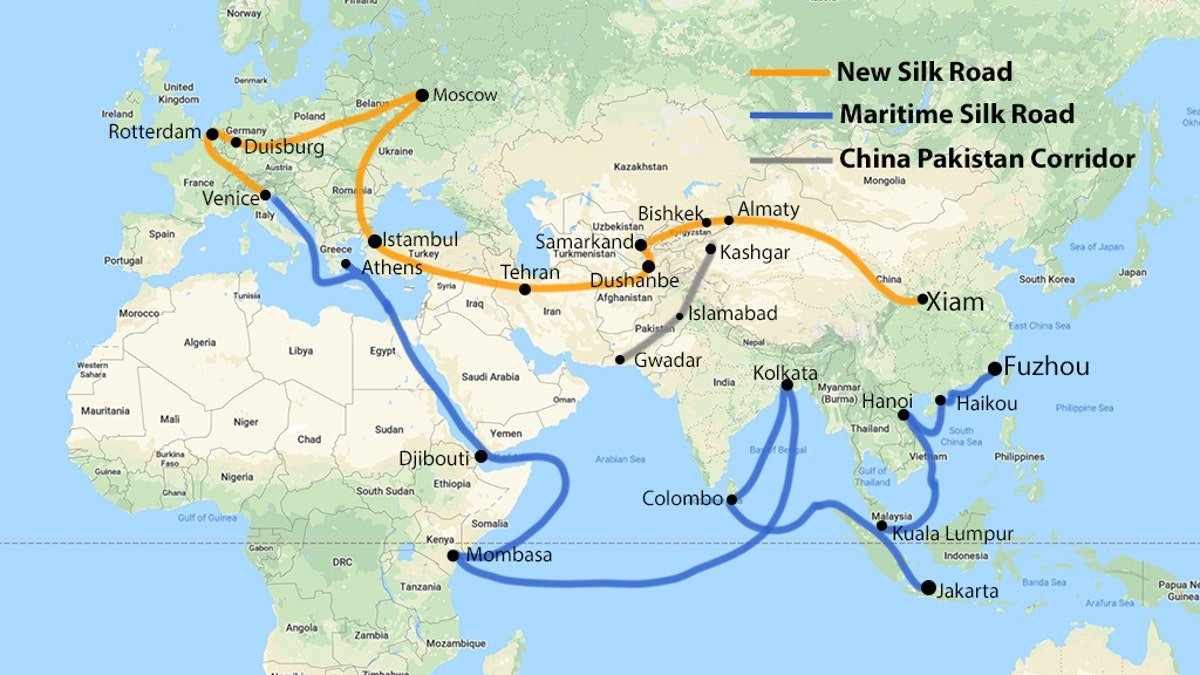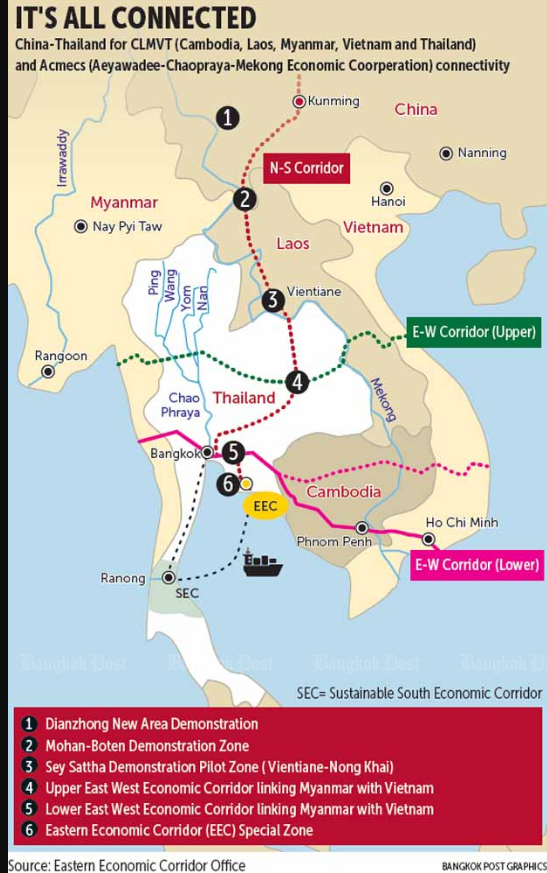
Current Affairs January 24, 2024: Batadrava Than, Ram Mandir, Ayodhya, Non-Aligned Movement, Subhash Chandra Bose Aapda Prabandhan Puraskar, Kumki Elephants, Karpoori Thakur, Bharat Ratna
Subscribers of "Current Affairs" course can Download Daily Current Affairs in PDF/DOC
Subscribe to Never Miss an Important Update! Assured Discounts on New Products!
Must Join PMF IAS Telegram Channel & PMF IAS History Telegram Channel
{GS1 – A&C – Architecture} Batadrava Than
- Context (IE): Rahul Gandhi was prevented from visiting Assam’s Batadrava Than.
- Batadrava Than is Located in the Nagaon district of Assam, 130 km east of Guwahati.
- The Than is situated at the birthplace of Vaishnavite reformer-Srimanta Sankardeva (1449-1568).
- It is considered the most sacred site for Assamese Vaishnavites.
- Sankardeva founded the first-ever Kirtan Ghar (Than/Sattra) at Bordowa (Batadrava) to preach and propagate ‘Ek Saran Naam Dharma’ (the neo-Vaishnavite faith ).
- The land within the 8 km radius around Batadrava Than is conserved for Khilonjia (indigenous people).
|
Srimanta Sankaradeva
- Srimanta Sankardev was an Assamese polymath–
- A saint-scholar,
- Poet, playwright, dancer, actor, musician, artist,
- Social-religious reformer and
- A figure of importance in the cultural and religious history of Assam.
|
- He is credited with building on past cultural relics and devising new forms of-
- Music (Borgeet),
- Theatrical performance (Ankia Naat, Bhaona),
- Dance (Sattriya),
- Literary language (Brajavali).
Social contribution
- He is considered to be the father of the modern Assamese race.
- He rescued the people of Assam from regressive medieval practices like human sacrifice.
- He promoted equality and fraternity and advocated for a society free from
- Caste distinctions,
- Orthodox Brahmanical rituals, and
- Sacrifices.
Religious contribution
- The Bhagavatic religious movement (Ekasarana Dharma) influenced two medieval kingdoms
- The Koch and
- The Ahom kingdom.
- His teaching focused on prayer and chanting (naam) instead of idol worship.
- Sankardev inspired the Bhakti movement in Assam.
- Sankaradeva advocated ‘EKA DEVA, EKA SEVA, EKA BINEY NAHI KEWA’, which means one should worship none but one God, who is Lord Krishna.
- It focussed on worship in the form of bhakti (devotion) to Lord Krishna through singing and congregational listening.
EKA SARABA NAMA DHARMA Religion (Neo- Vaishnavite movement)
- His religion, EKA SARANA NAMA DHARMA, is straightforward.
- There is no unnecessary ritual in his order.
- Batadrava, or Bordowa, became the centre of his religious activities.
- Batadrava has been regarded as the Dvitiya Vaikuntha (second heaven).
- His dharma was based on the four components of
- Deva (god),
- Naam (prayers),
- Bhaktas (devotees), and
- Guru (teacher).
-
Thans/Sattras
- The assembly of devotees of the Neo-Vaishnavite movement evolved into monastic centres called Thans /Sattras.
- These were established as centres of religious, social and cultural reforms in the 16th century.
- These are present in Assam and, to a lesser extent, in North Bengal.
- Batadrava Than was the first Than set for the propagation of EKA SARANA NAMA DHARMA.
- Other Thans founded by Sankaradeva are Gangmou, Belaguri, Patbausi, Kumarkuchi, Sunpora, and Madhupur.
- Later, many Sattras were set up by his followers all over the Brahmaputra valley.
- It has a naamghar (worship hall) as its nucleus and is headed by an influential “Sattradhikar”.
Literary and Artistic contribution
- He has left an extensive literary work of trans-created scriptures (Bhagavat of Sankardev), poetry and theological works written in Sanskrit, Assamese and Brajavali.
- He used to write scriptures sitting below one Shilikha (Myrobalan) tree.
- That tree is still alive even after five and half centuries, which is a wonder.
- He created a classical dance form known as both the Sankari dance and Satriya dance.
- The Sangeet Nâtak Akâdemi of India recognised it as a classical dance form in 2000 AD.
- He also developed a school of classical music, which is named after him.
- He created as many as 25 Râgas of his own.
- He was also the first playwright in all modern Indian languages.
- He was the first prose writer in the entire world.
- He introduced the drop-scene and elevated stage in the world of drama way back in 1468 AD.
- He authored ten plays in his life.
- He initiated a new form of painting with his epoch-making drama festival Chihna-Yâtrâ, where he drew imaginary pictures of heaven to be used as backdrops.
-
Sattriya Dance
- Sattriya originated in Sattra, a monastery, as a part of the neo-Vaishnavite movement in Assam.
- It includes Nritta, Nritya and Natya components.
- Sattriya dances differ from other dance forms in their basic stance.
- For males, it is known as Purush Pak, while for females, Prakriti Pak.
- The Sattriya dance (Unlike other Classical Dance forms) has been left untouched and has been the same since its birth.
- It had its influences from folk dance forms like
- Ojapali,
- Devadasi,
- Bihu,
- Bodos, etc.
- Strictly laid-down principles govern the Sattriya dance tradition with respect to
- Hasta mudras,
- Footwork,
- Aharyas,
- Music, etc.
- Traditionally, Sattriya was performed only by bhokots (male monks) in monasteries as a part of their daily rituals.
- The dance is based on mythological themes.
- Primarily based on Krishna-Radha relations or sometimes on the stories of Ram-Sita.
- Today, Sattriya is also performed on stage by men and women who are not members of the sattras on themes that are not merely mythological.
- It has two distinctly separate streams –
- The Bhaona-related repertoire
- The Independent dance numbers
-
Sattriya Dance Costume
- The costume of Sattriya dance is primarily of two types:
- The male costume comprising the dhoti and chadar and the paguri (turban) and
- The female costume comprising the ghuri, chadar and kanchi (waist cloth).
- Pat Silk saree (also spelt paat) is the most popular kind of saree used in this dance.
- It represents the locality through its various colourful motifs and designs.
- Traditional Assamese jewellery is used in the Sattriya dance.
- The jewellery is made in a unique technique in Kesa Sun (raw gold).
- The costume of Sattriya dance is primarily of two types:

-
Instruments
- There are various musical instruments used in this dance, some of which includes:
- Khol (drum),
- Bahi (flute),
- Violin,
- Tanpura,
- Harmonium and
- Shankha (Conch Shell).
- The songs are compositions of shankaradeva known as ‘Borgeets’.
- There are various musical instruments used in this dance, some of which includes:
{GS1 – A&C – Architecture} Ram Mandir
- Context (HT): The Ayodhya Ram mandir was inaugurated recently.
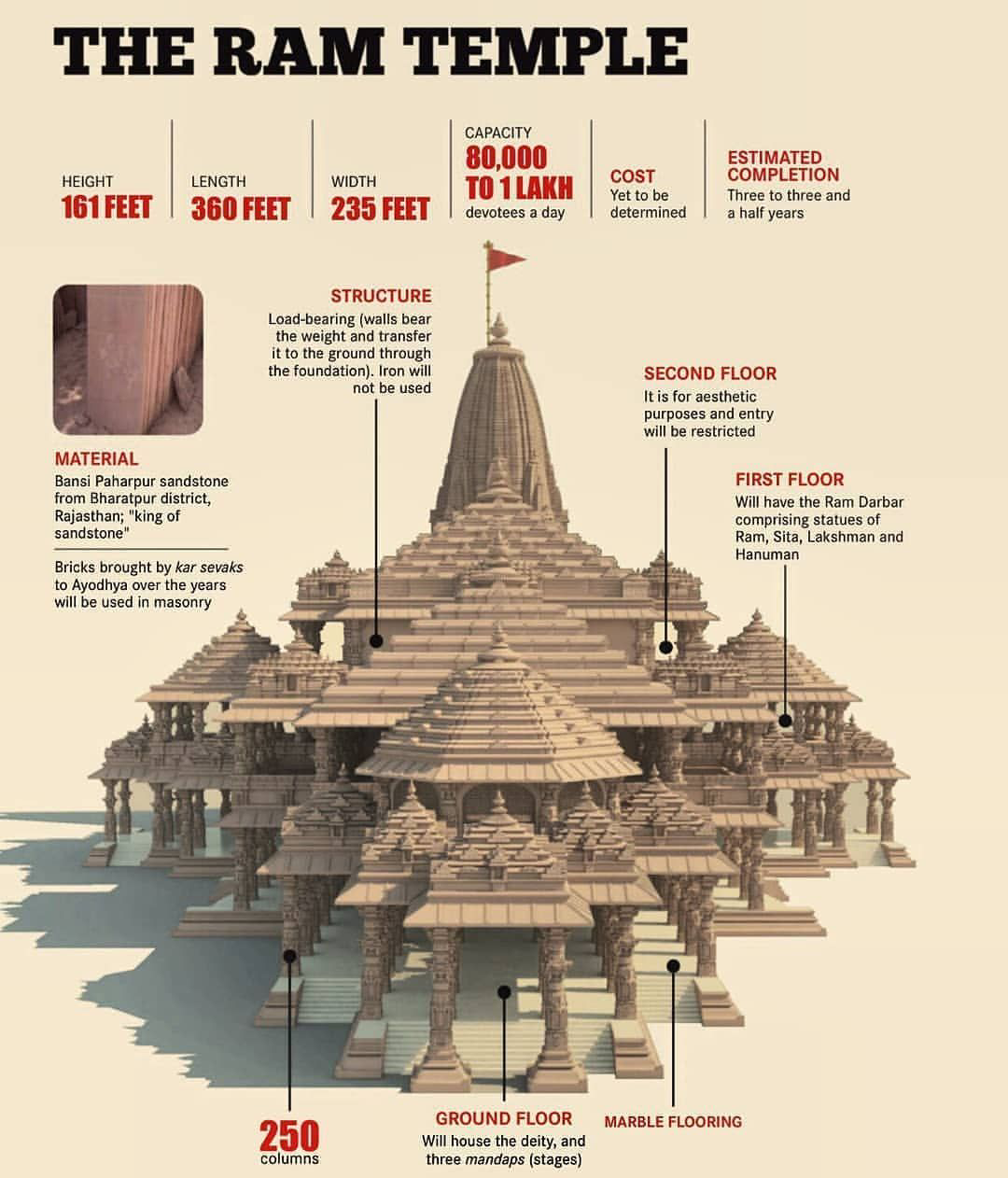
Dimensions
- It is a three-story temple with each floor being 20ft, supported by a total of 392 pillars and 44 doors.
- It has a length of 380 feet, a width of 250 feet, and a height of 161 feet.
Architecture
- It is constructed in the traditional Nagara style.
- Five mandaps: Nritya Mandap, Rang Mandap, Sabha Mandap, Prathana Mandap, and Kirtan Mandap.
- Singh Dwar: The main entrance is on the eastern side, with ascending 32 stairs.
- Garbhagriha (sanctum sanctorum) houses the childhood form of Bhagwan Shri Ram (Shri Ram Lalla), and the first floor houses a Shri Ram Darbar.
- Four Mandirs at four corners – dedicated to deities Shiv, Bhagwati, Ganesh, and Surya.
- Maa Annapurna temple is at the northern end, and Hanuman temple is at the southern end.
- The pillars and walls showcase intricately sculpted depictions of Hindu deities, gods, and goddesses.
- Parkota (Surrounding Rectangular compound wall): Length of 732 meters and a width of 14 feet.
- Kuber Tila (Southwestern part) has an ancient Shiv Mandir along with the Jatayu statue.
- Mandirs of Maharshi Valmiki, Maharshi Vasishtha, Maharshi Vishwamitra, Maharshi Agastya, Nishad Raj, Mata Shabri, and the revered consort of the Devi Ahilya are also proposed in the complex.
Materials used in the construction
- The project uses traditional construction materials, aligning with age-old building practices.
- It does not use iron or steel (Rusting results in a shorter life span).
- Bansi Paharpur Pink Sandstone from Rajasthan’s Bharatpur district is used for major construction.
- Granite stones are utilised in the plinths, providing a durable and resilient foundation for the temple.
- The use of granite adds structural strength while contributing to the overall longevity of the temple.
- White Makrana marble and coloured marble are intricately used for the inlay work.
- A thick layer of roller-compacted concrete (RCC) foundation appearing like artificial rock is laid down.
- Special bricks (Ram Shilas) with the inscription “Shri Ram” on them are used.
- Sculptor Arun Yogiraj carved out the “Balak Ram” idol from the pre-Cambrian era black granite sourced from Mysuru (Karnataka).
Properties of material used
Sandstone
- Sandstone is a sedimentary rock composed mainly of sand-sized silicate grains.
- It may be of any colour due to impurities within the minerals.
- Due to its durability, strength, and aesthetic appeal, it has been used in construction for many years.
- Source: Rajasthan (~90% deposits), Andhra Pradesh, Assam, Bihar, Gujarat, Haryana, Madhya Pradesh, Meghalaya, Mizoram, Karnataka, Odisha, Punjab, Uttar Pradesh, Tamil Nadu and West Bengal.
Granite
- It is an igneous rock formed by slow crystallisation of magma beneath the Earth’s surface (plutonic).
- Mohs hardness scale (used for hardness of minerals) rates it as 6-7 out of 10, making it very durable.
- It has low porosity (no water absorption and no weathering), acid resistance and thermal stability.
- Multiple colours are due to mineral composition, impurities, and rate of formation.
- Source: Odisha, Tamil Nadu, Karnataka, Jharkhand, Chhattisgarh, Rajasthan, Telangana, Andhra Pradesh.
Makrana marble
- Marble is a metamorphic rock composed of carbonate minerals (90%).
- Some other monuments of Makrana marble are the Taj Mahal, Humayun’s Tomb in New Delhi, Dukhnivaran Sahib Gurdwara in Ludhiana, Sheikh Zayed Mosque in Abu Dhabi, Moti Masjid in Lahore and the Victoria Memorial in Kolkata.
- It is designated as Asia’s first Global Heritage Stone Resource (GHSR) by the International Union of Geological Sciences.
- Only single deposit in India: Makrana (Nagaur in Rajasthan)
Surya Tilak
|
Sustainability Provisions
- With no use of iron and steel, it has a lower carbon footprint.
- The complex has a sewage treatment plant, water treatment plant, water supply for fire safety and an independent power station.
- Environmental water conservation (70% of the area left green) is emphasised.
- Bisleri will place 200+ bins around Ayodhya Ram Mandir to collect plastic bottles for recycling.
- Many items used on the day of the ceremony were made using cow dung.
{GS1 – A&C – Sites} Ayodhya
- Context (IE): Ram Mandir’s consecration has brought Ayodhya into the limelight.
History of Ayodhya
Ancient History
- “Ayodhya” means “not to be fought”. Atharvaveda and Jain literature Adi Purana refers to it as the unconquerable city of gods.
- “Saketa” is the older name for the city as per the Sanskrit, Jain, Buddhist, Greek and Chinese sources.
- Ancient Indian Sanskrit-language epics, Ramayana and the Mahabharata, mention a legendary city called Ayodhya.
- Epics mention it as the capital of the Ikshvaku kings of Kosala, including Lord Ram.
- Ayodhya was the early capital of the kingdom of Kosala, which was later shifted to Shravasti.
- It is also mentioned in Kalidasa’s Raghuvamsha.
- The Vayu Purana and the Brahmanda Purana attest that the early Gupta kings ruled Saketa. Still, no Gupta-era archaeological layers have been discovered except for many Gupta coins.
- Karamdanda (Karmdand) inscription of Kumaragupta I names it as the capital of the Kosala province.
- The Hunas (Mihirakula) invasion in the 6th century is the probable cause of the decline of Ayodhya.
- In the 11th-12th century, the Kanauj kingdom arose in Ayodhya (Oudh/Awadh).
- After the fall of Harsha’s Kannauj empire, it was supposedly under Gurjara-Pratiharas kings.
- The Gahadavala dynasty came to power in the region (11th century) and promoted Vaishnavism.
Buddhist connection
- It is identical to Saketa, where the Buddha is said to have resided for some time.
- Samyutta Nikaya and the Vinaya Pitaka mention the city of Saketa and a big river near it.
- The later Buddhist text Mahavastu describes Saketa as the seat of the Ikshvaku king Sujata.
- Chinese Buddhist monk Fa-Hian (5th century CE) mentioned multiple monasteries in Ayodhya.
- Ashoka is also believed to have constructed a stupa in Ayodhya.
-
Jainism connection
- Jain canonical text Jambudvipa-Pannati describes a city called Viniya (synonyms with Ayodhya) as the birthplace of Lord Rishabhdev (1st Tirthankar).
Medieval Period
- Ayodhya became part of the Delhi Sultanate, the Jaunpur Kingdom, and the Mughal Empire.
- Babri Mosque was built in 1528–29 by Mir Baqi, a commander of the Mughal emperor Babur.
- After the death of Aurangzeb in 1707 AD, the central Muslim rule weakened, and Awadh became virtually independent, with Ayodhya as its capital.
British Period
- It became subordinate to the British East India Company in 1764.
- The first capital of Oudh/Awadh was Ayodhya, later Faizabad.
- Treaty of Allahabad (1765) after the Battle of Buxar resulted in the transfer of 50 lakhs by Nawab of Awadh to Britishers.
- Awadh Annexation (1856) by Dalhousie’s Doctrine of Lapse was a factor in the 1857 revolution.
- Oudh was joined with the Agra Presidency in 1877 to form the North-Western Provinces and later the United Provinces of Agra and Oudh, now Uttar Pradesh state.
Post-independence
- Excavations at Ayodhya discovered a large brick wall (fortification wall) by archaeologist B. B. Lal.
- It has been the centre of the Ram Janambhoomi movement.
Geography
- It is situated in the Indo-Gangetic Plain with a subtropical monsoon climate.
- It is located on the southern bank of the Saryu River.
Saryu/Sarju River
- Origin: Nanda Kot mountain (Sarmaul, Bageshwar district, Uttarakhand) in Kumaon Himalayas.
- It is the largest tributary of the Mahakali (Sharda) River, meeting it at Pancheshwar at the India—Nepal border.
- Left Bank Tributaries: Ramganga, Punger
- Right Bank Tributaries: Gomati, Panar, Lahor
- It is also referred to as Lower Ghaghra, which flows through Ayodhya.
|
{GS2 – IR – Groupings} Non-Aligned Movement (NAM)
- Context (LM): Recently, the 19th Non-Aligned Movement (NAM) summit was held in Kampala, Uganda.

- The Non-Aligned Movement (NAM) is a group of states that are not formally aligned with or against any major power bloc.
- It has been established based on the principles agreed at the Asia-Africa Conference held in Bandung (Indonesia) in 1955, (known as the “Ten Principles of Bandung”).
- It was founded in 1961, in Belgrade, Serbia, as a movement opposed to the East-West ideological confrontation of the Cold War.
- Founding fathers of the movement: Gamal Abdel Nasser of Egypt, Kwame Nkrumah of Ghana, Shri Jawaharlal Nehru of India, Ahmed Sukarno of Indonesia, and Josip Broz Tito of Yugoslavia.
- Objective of NAM: To ensure “the national independence, sovereignty, territorial integrity and security of non-aligned countries” in their struggle against imperialism, colonialism, neo-colonialism, racism, and all forms of foreign subjugation.
- At present, the NAM consists of 120 member countries that account for about 60% of the United Nations’ overall membership.
- NAM is without any formal administrative structures and without a budget.
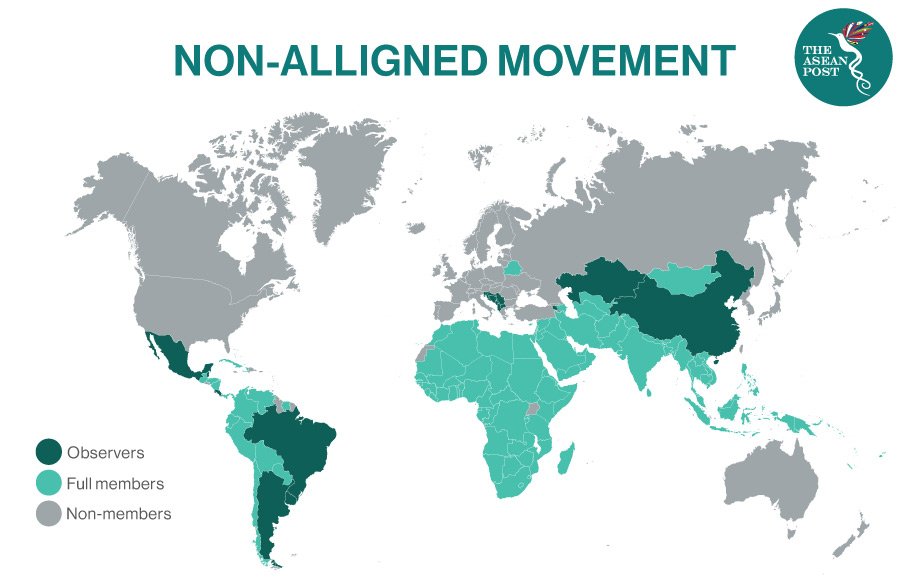
Ten principles of Bandung
|
Achievements of NAM
- Focus on the 4Ds (Détente, Disarmament, Decolonisation and Development of Third World).
- Independent voice to the Global South, giving them the freedom to pursue their own agenda. E.g. it condemned racial discrimination and injustice and lent full support to the antiapartheid movement in South Africa and Namibia.
- The non-aligned declarations on nuclear testing and nuclear non-proliferation especially helped to concretise the 1963 Partial Test Ban Treaty.
- It also helped create several nuclear-weapon-free zones as well as formulate the Nuclear Non-proliferation Treaty.
- The tradition of ‘non-use of nuclear weapons’, or the ‘nuclear taboo’, was strengthened partially due to activism by the non-aligned countries at the UN.
- It has ended the monopoly of Western agencies over news dissemination services with the setting up of a non-aligned Newspool.
- NAM’s role in establishing world peace by solving various political conflicts such as the Korean War and the problems of Kampuchea, Vietnam, Congo, Iran, Iraq, Namibia, the Middle East, etc.
Failures of NAM
- Lack of collective action and collective self-reliance, and the non-establishment of an equitable international economic or information order.
- Inability in resolving the Arab-Israel conflict.
- Inability to halt the arms race, regional conflicts (Iran-Pakistan, Russia-Ukraine), etc.
Importance of NAM for India
- Support for India’s Candidature at UNSC.
- Safeguarding India’s Strategic autonomy: India can mobilize the larger constituency of developing countries & emerging economies for support on key issues – COVID, protectionism, UN reforms, etc.
- Crucial to the rise of India’s stature as the voice of the developing world or global south, facilitating south-south cooperation.
- Formation of a multipolar world with India becoming an independent pole in global affairs.
- India’s Opportunity to shape post-COVID world order with support from NAM.
Is NAM losing its relevance in current times?
Arguments in Favour
- NAM’s relevance was diluted with the end of Cold War and rise of a Multipolar world.
- Benign neglect: Even as NAM has continued to maintain its schedule of periodic meetings, there is a diminishing political commitment towards it.
- Perceived tilt towards big powers: Many member countries, including India, have strengthened their engagement with the developed world to secure capital, trade, technology, and markets.
- Fissures within NAM countries lead to difficulty in arriving at a consensus on various global issues leading to the raising of divisive issues, score-settling among members, etc.
- Increasing relevance of Alternative forums like G-20 and regional cooperation frameworks like BIMSTEC, ASEAN, SCO, RCEP, etc.
- NAM a mere ‘talk shop’: Since a majority of the members are developing nations, inability to command adequate power to enforce their decisions on resource-rich developed nations.
Argument Against
- NAM members represent 2/3rd of the UN Membership and commands voice against any international hegemony to dominate smaller states. E.g. voice against unequal world economic order, reforms of Multilateral institutions (UN, WTO, etc.).
- Collective position: NAM members coordinate with one another during debates, giving them a huge bargaining power on various global issues such as Climate change, poverty eradication, globalisation, protecting trade interests of developing countries at WTO, etc.
- Relevance in the wake of the new ‘Two Front’ Cold War unfolding between US-China and US-Russia.
- Neo-colonialism: NAM still remains a strong pillar of support for developing nations fighting against racism, occupation and neo-colonialism. E.g. occupation of Palestine; ‘Debt trap Diplomacy’ faced by African and Asian nations at the hands of China etc.
- Reinforcing strategic autonomy: Even as developing countries have strengthened their engagements with the developed ones, the threat of ‘arm twisting’ is apparent. E.g. Controlling the right to peaceful use of nuclear energy, restricting access to technologies via IPR clauses, etc.
- Focus on Peace: Bandung principles on peace and development still hold relevance as Armed conflicts continue to rage in Iraq, Libya, Syria, Yemen, Ukraine etc. and challenges of Terrorism, ethnic violence, refugee issues, etc. persist.
Revitalising NAM: The Way Ahead
- Meeting unrealized long-standing goals of the Movement, i.e. Peace, development, economic cooperation, and the democratization of international relations.
- Taking on New challenges of the interconnected world thrown up by Climate change, extremism, aggressive nationalism, terrorism, refugee crises, etc., and aligning efforts with SDG goals.
- Greater push for reforms in Multilateral institutions like the UN, IMF, WTO, etc to enable them to tackle 21st century challenges.
- Effectively meeting security challenges of terrorism, cyber security, weapons of mass destruction (WMD), universal nuclear disarmament, drug trafficking, organized crime, etc.
{Prelims – Awards} Subhash Chandra Bose Aapda Prabandhan Puraskar
- Context (PIB): 60 Parachute Field Hospital, Uttar Pradesh, in the Institutional category, has been selected for the Subhash Chandra Bose Aapda Prabandhan Puraskar 2024.
- The Subhash Chandra Bose Aapda Prabandhan Puraskar recognizes work done by individuals and institutions in the field of Disaster Management.
- Awards are announced annually on 23rd January, birth anniversary of Netaji Subhash Chandra Bose.
Eligibility
- Only Indian nationals and Indian institutions can apply for the award.
- For institutional awards, voluntary organizations, corporate entities, academic/research institutions, response/ uniformed forces or any other institution may apply for the award.
- Any Indian national or institution can nominate a candidate for consideration for this award.
- Candidates can also self-nominate themselves.
Award
- If the awardee is an institution, it shall receive a certificate and a cash prize of Rs. 51 lakhs. The Institution shall utilize this cash prize for Disaster Management-related activities only.
- If the awardee is an individual, the winner shall receive a certificate and a cash prize of Rs. 5.00 lakhs.
- An application by an institution does not debar any individual from that institution from applying for the award in his individual capacity.
{Prelims – In News} Kumki Elephants
- Context (TH): The Odisha government seeks assistance from TN to deploy Kumki elephants to address human-elephant conflicts.
- Kumki refers to trained captive Asian elephants in India used for various operations, including trapping wild elephants, rescue missions, and providing medical treatment.
- Kumkis are used to drive away wild elephants from human settlements without direct physical contact, utilizing territorial behaviour aided by scent and other forms of animal communication.
{Prelims – In News} Pran Pratistha
- Context (IE): The Pran Pratishtha ceremony of the idol at Ayodhya’s Ram temple was held.
- Pran Pratistha is the act that transforms an idol into a deity, giving it the capacity to accept prayers.
Stages of Pran Pratistha
- Shobha yatra: Procession of the idol, taken out in the neighbourhood of the temple.
- Adhivas: Submerged in various materials such as Water (Jalãdhivãs) and grain (Dhãnyãdhivãs).
- Ritual bath: It can have 108 different types of materials, such as Panchamrut.
|
- Netronmeelan: Opening of the eyes involves putting anjan, somewhat like kohl, around the deity’s eyes with a gold needle. It is the final ceremony of Pran Pratishtha.
{Prelims – PIN} Karpoori Thakur
- Context(PIB I IE I TH I IE I TH): The Centre announced it would award the Bharat Ratna posthumously to Karpoori Thakur, former CM of Bihar.
- 2024 is the birth centenary year of Thakur (Jan 1924-1988), also known as ‘Jannayak’, or the leader of the people.
About Karpoori Thakur
Life and Career
- He was born in village Pitaunjhia (Karpoori Gram), in the Samastipur district of Bihar.
- He was voted in as an MLA in 1952 and remained an MLA till his death in 1988, except when he became an MP in 1977 and when he lost an Assembly election in 1984.
- Thakur was education minister of Bihar from March 5 1967 to January 28, 1968.
- Twice he was Bihar’s CM (December 1970-June 1971 and December 1977-April 1979).
- During his second innings as a CM he could not finish a full term because of the reservation policy he implemented.
- Democracy, debate and discussion were integral to him.
- He participated in the freedom struggle and was jailed (during the Quit India movement in 1942).
- He was part of the anti-Emergency movement along with the other key socialist leader Jayaprakash Narayan.
- He emerged as the tallest backward caste leader in Bihar despite belonging to the minority caste.
- Rise of the leaders he mentored, from numerically stronger castes Lalu Prasad from the Yadavs, Ram Vilas Paswan among Dalits, took away his pole position.
- He is known to have been firmly against dynastic politics.
Major Policy Decisions
- While his policy decisions were polarising, he was respected personally for his clean image.
- He is known for many of his decisions —
- Removing English as compulsory subject for the matriculation examinations;
- Prohibition of alcohol;
- Preferential treatment for unemployed engineers in government contracts,
- A layered Reservation system.
- Promotion of Hindi language in government offices.
- Declaring Urdu as the second official language in Bihar.
- Waiving school fees,
- Strengthening the Panchayati Raj system by holding regular elections.
- As a CM he took many steps for the welfare of senior citizens as well.
-
Layered Reservation System
- Thakur’s life revolved around the twin pillars of simplicity and social justice.
- In June 1970, the Bihar government appointed the Mungeri Lal Commission.
- Commission named 128 “backward” communities, 94 of which were identified as “most backward”.
- The Janata Party government of Thakur implemented the recommendations of the Commission.
- The ‘Karpoori Thakur Formula’ provided 26% reservation (in government services), of which
- OBCs-12% share,
- The economically backward classes among the OBCs-8%,
- Women-3%, and
- The poor from the “upper castes”– 3%.
- This reclassification was seen as a precursor to the Mandal Commission report that recommended 27% reservations for OBCs.
- Thakur faced derogatory and even abusive slogans from the upper castes, directly targeting his caste.
- Politically too, his decision of bringing in the reservation policy has been seen as hasty.
- He included Poors from the Upper Caste much before the GOI came up with the EWS quota.
Social Justice and Social Reform
- Social justice was most dear to Jan Nayak Karpoori Thakurji.
- He belonged to the most backward strata of society but he worked for all the people.
- He practiced “assimilative and inclusive politics”.
- Karpoori thakur and Jay Prakash Narayan of Janata Party launched the iconic ‘Sampoorna Kranti’ movement which aimed at transforming Indian society in a non-violent way.
- He envisioned a society where resources were distributed fairly and everyone, regardless of their social standing, had access to opportunities.
- He wanted to address the systemic inequalities that plagued Indian society.
- Throughout his political career, he worked to improve education facilities for the poor.
- He was a proponent of education in local languages so that people from small towns and villages could climb the ladder and attain success.
Bharat Ratna
- The Bharat Ratna is India’s highest civilian honour, established in 1954.
- The original statute, released in January 1954, did not contain any provision for posthumous awards. The provision for posthumous awards was added in the 1966 statute.
- On the Prime Minister’s suggestion to the President of India, a maximum of three Bharat Ratna awards can be presented each year.
- The awardees are not allowed to use Bharat Ratna as a prefix or suffix to their names, as stated in Article 18(1) of the IC.
|
- There is no formal requirement that the Bharat Ratna be granted solely to Indian nationals.
- This prestigious prize was given to a naturalized Indian citizen, Agnes Gonxha Bojaxhiu, popularly known as Mother Teresa (1980).
- The prize was given to Non-Indians like-
- The first recipients of the Bharat Ratna were Sarvapalli Radhakrishnan, Sir C.V. Raman, and Chakravarti Rajagopalachari in 1954.
- Sachin Tendulkar is the first sportsperson and the youngest recipient of the Bharat Ratna.
Award’s Design
- The recipient of the award receives a Sanad (certificate) signed by the President and a medallion.
- The medallion is cast in Bronze.
- The design of the medallion resembles the leaf of the pipal tree, with a sunburst in the center. The words ‘Bharat Ratna’ are engraved below it.
- The emblem of India is embossed on the back, & ‘Satyameva Jayate’ inscribed in Devanagari script.
- The award does not include any monetary endowment.
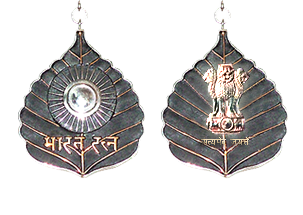
Who is Eligible for Bharat Ratna?
- Initially, the Bharat Ratna was only awarded for achievements in literature, science, arts, and public services.
- GoI expanded the criteria in 2011 to include “any field of human endeavor”.
- There is no written rule stating that the Bharat Ratna can only be awarded to Indian citizens.
Controversies Related to Bharat Ratna
- In 1992, Subhash Chandra Bose was posthumously awarded the Bharat Ratna.
- However, due to the lack of concrete evidence regarding his death, his family refused to accept the award.
{Prelims – S&T – Defence} Exercise Cyclone
- Context (PIB): Indian and Egyptian troops participated in 2nd edition of Exercise Cyclone in Egypt.
- Objective: Familiarise both sides with special operations in desert/semi-desert terrain.
- Note: This is not to be confused with the Exercise Desert cyclone which is a Joint Military Exercise between India and UAE.
{Prelims – S&T – Defence} Exercise Khanjar
- Context (PIB): 11th edition of India-Kyrgyzstan joint military exercise–Khanjar was conducted.





![PMF IAS Environment for UPSC 2022-23 [paperback] PMF IAS [Nov 30, 2021]…](https://pmfias.b-cdn.net/wp-content/uploads/2024/04/pmfiasenvironmentforupsc2022-23paperbackpmfiasnov302021.jpg)
